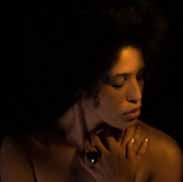PBS 1.2: The Structure of DNA
Unlock all answers in this set
Unlock answersquestion
DNA
answer
hereditary material in humans and all living organisms
question
Nucleotide
answer
the basic unit of DNA, which is composed of a deoxyribose sugar molecule, a phosphate group, and a nitrogen base
question
Double Helix
answer
twisted ladder; shape of DNA
question
Nitrogenous Bases
answer
four types of nitrogenous bases, and the sequence of these bases encodes the information that determines an organism's traits: Adenine, Thymine, Guanine, Cytosine
question
DNA helps...
answer
detect genetic predisposition to disease, creates new drugs to treat disease, and personalize medicine based on individual genetic profiles.
question
Polymer
answer
DNA is a polymer, a large molecule made of repeating units (or monomers) called nucleotides.
question
Nucleotides
answer
made by combining a phosphate, a sugar, and a nitrogenous base, with the deoxyribose combining both to the phosphate and the nitrogenous base.
question
X-Ray Crystallography Data
answer
- Phosphate was on the outside, nitrogenous bases were on the inside - DNA was a double helix, made up of two strands - The two strands of DNA run in opposite directions - There are 10 base pairs per turn of the double helix
question
Chromosomes
answer
in order to fit inside a cell, the DNA is highly coiled and twisted into chromosomes
question
Extracting DNA
answer
Cell membranes and nuclear membranes are made up of fats. Detergents wash away these fats, just like they would grease in pan.
question
Extracting DNA
answer
Dna is in solution, you can separate the components by filtering the mixture through cheesecloth. Finally, you can separate DNA from solution with alcohol, since DNA does not dissolve in alcohol.
question
Extracting DNA (plant cell)
answer
Plant cells have a cell wall that makes it tougher to break into the cell, homogenize it in order to break the cell wall
question
DNA Analysis
answer
1) Polymerase Chain Reaction (PCR) 2) Restriction Endonucleases (restriction enzyme) 3) Gel electrophoresis 4) DNA Profiling
question
1) PCR
answer
Enables scientists to produce millions of copies of a specific DNA sequence from a small sample of DNA. First primer is added and it attaches itself to the little section of DNA that'll grab on to the DNA (allows polymerase to drive down the DNA). Machine heats up causing DNA to split. Primer will bond to the complementary sides of the DNA. Taq Poly is added in and adds complementary letters to either side. Taq Poly moves down the DNA creating a second copy. Repeats again until millions copies of DNA are made.
question
2) Restriction endonucleases
answer
act as molecular scissors that can cut DNA in specific location. Because every Individual's DNA is slightly different, an individual's code determines the number of times the restriction enzymes will cut and the number and size of DNA pieces that will result. Restriction enzymes cut DNA at specific nucleotide sequences. Many different restriction enzymes are produced naturally by bacteria as a defense against invading organisms, such as viruses.
question
3) Gel electrophoresis
answer
DNA fragments move through the gel catalyzed by an electric current. Short fragments move faster than long fragments. Dye shows where the fragments have moved, they use sample DNA to compare the DNA being measured.
question
4) RFLPs
answer
a set of DNA puzzle pieces unique to the individual, to create a pattern called a DNA fingerprint (DNA profiling)
question
Ligase
answer
catalyzes the chemical reaction that rejoins the DNA sugar phosphate bonds.
question
What is DNA?
answer
blueprint for our physical traits. Also a double stranded, helical nuclei acid molecule capable of replicating and determining the inherited structure of a cell's proteins.
question
How do scientist isolate DNA in order to study it?
answer
DNA extraction. you extract DNA from the other parts of the cell, the buffer(soap) breaks down the cell membrane, alcohol(both), precipitate helps get DNA out of solution
question
How does DNA differ from person to person?
answer
Sequence of the base pairs.
question
How can tools of molecular biology be used to compare the DNA of two individuals?
answer
The restriction enzymes and gel electrophoresis can be used to match or compare DNA. PCR can be used to copy DNA if there isn't enough to examine
question
What are restriction enzymes?
answer
They cut the DNA into specific parts
question
What are restriction fragment length polymorphisms?
answer
They are the little pieces left after molecular scissors cut DNA
question
What is gel electrophoresis and how can the results of this technique be interpreted?
answer
Separation of nucleic acids or proteins; by size and electrical charge and by measuring rate of movement through an electrical field in a gel.



